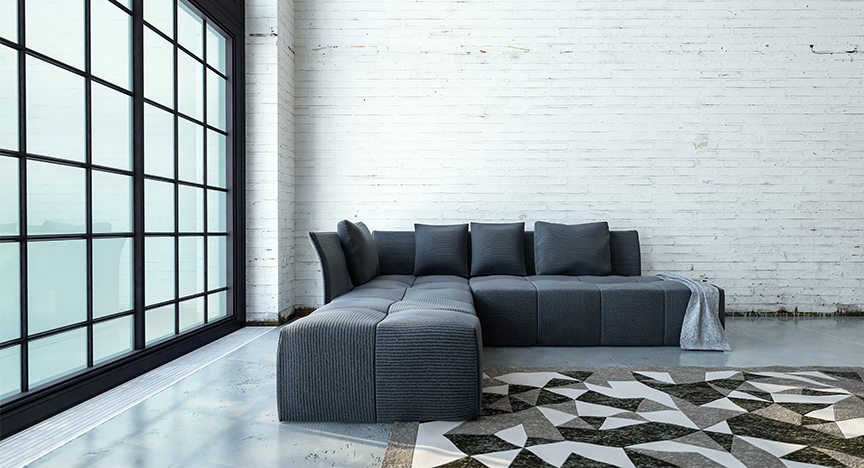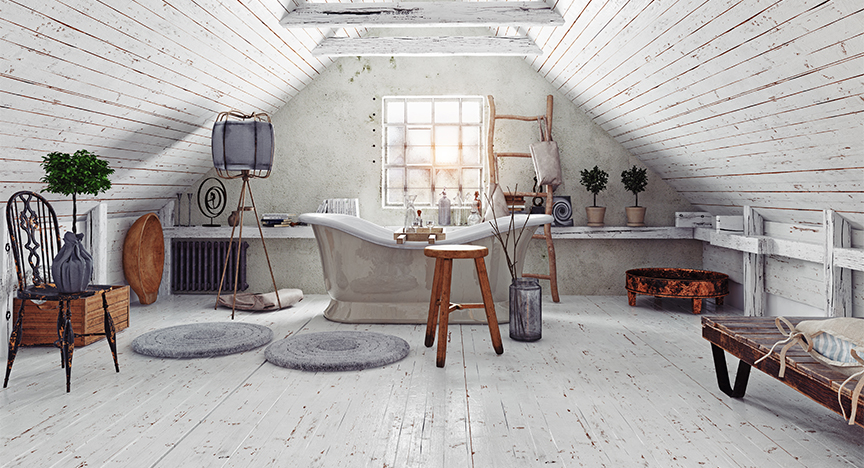More was more in this decade. The 1980s is renowned for its energy, fun and vibrancy. Interior design was experimental with clashing patterns and striking colours - everything went together and there was nothing subtle about it. This movement is known as Post-Modernism or Modern Retro.
Media-induced movements
Popular movies and TV shows swamped living rooms in the eighties showcasing home interiors to be sought after. American shows like Miami Vice, Dynasty and Dallas led to popularity in glass blocks statement features, that could be used for room divisions or creating privacy in homes. Back to the Future was also released in cinemas and inspired a new age of science-fiction along with Dr Who and Star Trek.
In 1982, Channel 4 began broadcasting making it the fourth television service for the UK audience. Channel 4 aimed to shake things up by committing to provide alternative and controversial viewing. Over the decade Channel 4 became particularly popular with minority groups and the contemporary arts culture.
MTV also launched in 1981, with music videos storming the channels and capturing the imagination of people. Top of the Pops was aired and had a huge influence on the style of younger generations. A new wave of sounds blasted out from cassette players all over the UK from synth-pop and R&B to soft-rock. Iconic and expressive artists like Madonna, Prince, Michael Jackson, Wham and Duran Duran inspired a culturally diverse and inclusive generation.
The cool culture
Fashion from the eighties is legendary, but quite an acquired taste nowadays. Your individual style became a statement to others. Bright colours, shiny shell suits, clashing patterns and oversized pieces were staples in every wardrobe to create edgy, playful looks that exuded cool and copied the famous figures seen on television screens.
A gaming culture was also rising in Britain, arcade games such as PAC-MAN, Asteroids and Space Invaders were entertaining teenagers on television sets and home computers, and the first Nintendo video game console was introduced in the UK in 1987.
Home interiors maintained the fun colour palette introduced from the seventies, but earthier tones evolved into pastels like dusty blue, peach, and mauve. Multicultural influences such as Chintz patterning and Ikat dyeing were introduced in households and covered most of the upholstery from the sofas and curtains to headboards and rugs. Inspired by the excessive fashion styles of the time, the oversized scale trend also found its way into the home to create fun and cool design statements.
Tech-enabled living
Technological advancement meant that imagination was no longer constricted. The 1980s saw some monumental inventions such as the GPS satellite, Macintosh computers and the World Wide Web which went on to fuel our desire for connected living.
Space and science advancements were also keeping the UK public captivated with the launch of the Russian Space Station which made it possible for Astronauts to live and work in space. Our fascination with space even seeped into the sweet shops with the creation of famous Retro sweets like space dust popping candy and sherbet spaceships!
Politics and predicaments
The eighties saw the fall of the trade unions as Margaret Thatcher's government made it more difficult for unions to strike legally. Thatcher made bold decisions and policies that were controversial and resulted in a nation of mixed feelings. She aimed to mend the failing economy with indirect taxes, a curb on public spending and reduced household contributions from the government, but this heavily impacted the most vulnerable of Britain's society.
In 1984, the Coal Board announced that 20 uneconomic pits would have to close, making her particularly unpopular with the North of the UK and resulting in half of the country’s miners on strike yet again. Her pure vision was soon recognised though, with the reduction in inflation and some economic stability. Her Right to Buy policy saw house ownership substantially increase across Britain and house prices climbed to new heights.
Further political change was underway between the East-West relations as President Reagan challenged the Russian leader, Gorbachev, to “tear down the wall” and improve relations post-war. Two years later, German citizens literally tore down the wall in an uprising, which was witnessed all over the world in admiration.
Times for grand statements
The 1980s were a time for change and for bold statements, from fashion and music to technological and political movements. The eighties interior design trend Post-Modernism certainly encapsulated this powerful era and clashes of opinion, but it also celebrated the technological and cultural shifts taking place. Today, many gaming arcades, restaurants and sweet shops still haven’t changed their interior style because it’s such a powerful and evocative statement. Anything seemed possible in the eighties and life was for living.





